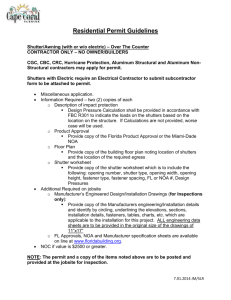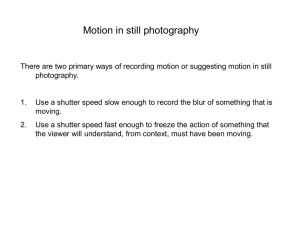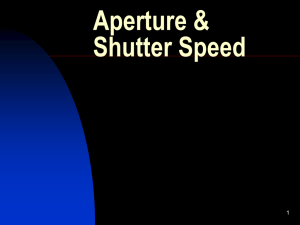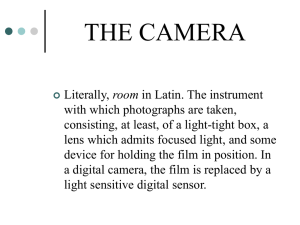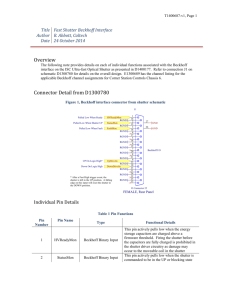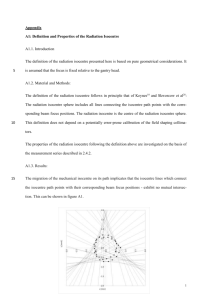Quality Assurance Te..
advertisement
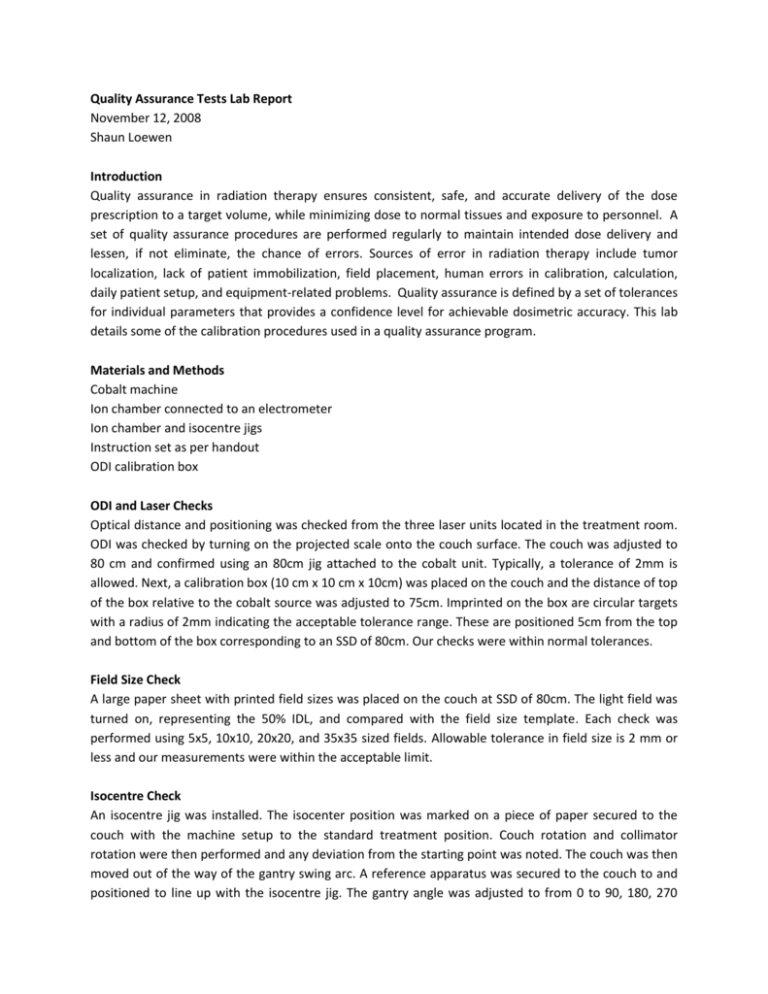
Quality Assurance Tests Lab Report November 12, 2008 Shaun Loewen Introduction Quality assurance in radiation therapy ensures consistent, safe, and accurate delivery of the dose prescription to a target volume, while minimizing dose to normal tissues and exposure to personnel. A set of quality assurance procedures are performed regularly to maintain intended dose delivery and lessen, if not eliminate, the chance of errors. Sources of error in radiation therapy include tumor localization, lack of patient immobilization, field placement, human errors in calibration, calculation, daily patient setup, and equipment-related problems. Quality assurance is defined by a set of tolerances for individual parameters that provides a confidence level for achievable dosimetric accuracy. This lab details some of the calibration procedures used in a quality assurance program. Materials and Methods Cobalt machine Ion chamber connected to an electrometer Ion chamber and isocentre jigs Instruction set as per handout ODI calibration box ODI and Laser Checks Optical distance and positioning was checked from the three laser units located in the treatment room. ODI was checked by turning on the projected scale onto the couch surface. The couch was adjusted to 80 cm and confirmed using an 80cm jig attached to the cobalt unit. Typically, a tolerance of 2mm is allowed. Next, a calibration box (10 cm x 10 cm x 10cm) was placed on the couch and the distance of top of the box relative to the cobalt source was adjusted to 75cm. Imprinted on the box are circular targets with a radius of 2mm indicating the acceptable tolerance range. These are positioned 5cm from the top and bottom of the box corresponding to an SSD of 80cm. Our checks were within normal tolerances. Field Size Check A large paper sheet with printed field sizes was placed on the couch at SSD of 80cm. The light field was turned on, representing the 50% IDL, and compared with the field size template. Each check was performed using 5x5, 10x10, 20x20, and 35x35 sized fields. Allowable tolerance in field size is 2 mm or less and our measurements were within the acceptable limit. Isocentre Check An isocentre jig was installed. The isocenter position was marked on a piece of paper secured to the couch with the machine setup to the standard treatment position. Couch rotation and collimator rotation were then performed and any deviation from the starting point was noted. The couch was then moved out of the way of the gantry swing arc. A reference apparatus was secured to the couch to and positioned to line up with the isocentre jig. The gantry angle was adjusted to from 0 to 90, 180, 270 degrees and the difference from the jig to the reference apparatus was noted, if any. Our measurements were within normal limits (≤2mm diameter of all measured points). Shutter Error Measurement Shutter error refers to the time needed to move the cobalt source to the full “on” position or to the full “off” position. During this transition, there is partial exposure of the cobalt source and therefore lower exposure of the cobalt source to the patient. The shutter correction factor takes shutter error into account in the overall radiation exposure time to the patient to provide more accurate dose delivery. Shutter error correction is not needed on linacs because treatment transition on and off is nearly instantaneous. The pulsed output of linacs, however, leads to accumulation of the “shutter” errors in what is referred to as end effect. The end effect is still very small and usually not considered in the treatment time calculations. We calculated the shutter error of our Cobalt machine by measuring the doses for two difference exposure times. An ion chamber jig set up at isocentre and 80cm SSD was used. Exposure times were 30 and 60 secs. Each measurement was performed twice and the averages of the two values were taken for further calculations. Using the equation for dose rate, R = D2-D1/(T2-T1); where (178.4R -89.8R)/1 min-0.5min = 177.2 R/min A second equation for shutter correction (S): T1 – D1/R = 0.5 min - 89.9R/177.2R/min = 0.006 min x 60000 msec/min = 406 msec The shutter correction for our Cobalt unit is 406 msec. Conclusion This lab outlined some of the quality assurance procedures commonly used to ensure accurate and reproducible dose prescriptions. Typically, ODI and laser checks are performed daily, whereas field size checks are performed monthly and isocentre checks and shutter error calculations are performed annually. These procedures help to establish a quality radiation delivery system and ultimately, provide the best possible care for the patient.

